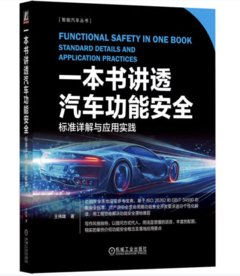Rootkits: Subverting the Windows Kernel (Paperback)
暫譯: Rootkit:顛覆 Windows 核心
Greg Hoglund, Jamie Butler
- 出版商: Addison Wesley
- 出版日期: 2005-07-01
- 售價: $2,380
- 貴賓價: 9.5 折 $2,261
- 語言: 英文
- 頁數: 352
- 裝訂: Paperback
- ISBN: 0321294319
- ISBN-13: 9780321294319
已絕版
買這商品的人也買了...
-
 C++ Primer, 3/e 中文版
C++ Primer, 3/e 中文版$980$774 -
 ASP.NET 程式設計徹底研究
ASP.NET 程式設計徹底研究$590$466 -
 JSP 2.0 技術手冊
JSP 2.0 技術手冊$750$593 -
 Microsoft Windows Internals: Microsoft Windows Server 2003, Windows XP, and Windows 2000, 4/e
Microsoft Windows Internals: Microsoft Windows Server 2003, Windows XP, and Windows 2000, 4/e$2,220$2,109 -
 Linux 指令詳解辭典
Linux 指令詳解辭典$650$553 -
 ASP.NET 徹底研究進階技巧─高階技巧與控制項實作
ASP.NET 徹底研究進階技巧─高階技巧與控制項實作$650$507 -
 Shell Programming 333 個應用範例技巧大全集
Shell Programming 333 個應用範例技巧大全集$560$437 -
 Head First Servlets & JSP:SCWCD 專業認證指南 (Head First Servlets & JSP)
Head First Servlets & JSP:SCWCD 專業認證指南 (Head First Servlets & JSP)$880$748 -
 CCNA 認證教戰手冊 (CCNA: Cisco Certified Network Associate Study Guide, 5/e)(Exam 640-801)
CCNA 認證教戰手冊 (CCNA: Cisco Certified Network Associate Study Guide, 5/e)(Exam 640-801)$820$697 -
 計算機組織與設計 (Computer Organization and Design: The Hardware/Software Interface, 3/e)
計算機組織與設計 (Computer Organization and Design: The Hardware/Software Interface, 3/e)$680$646 -
 最新詳解 Javascript & HTML & CSS 語法辭典(增訂新版)
最新詳解 Javascript & HTML & CSS 語法辭典(增訂新版)$490$382 -
 深入淺出設計模式 (Head First Design Patterns)
深入淺出設計模式 (Head First Design Patterns)$880$695 -
 深入淺出 Java 程式設計, 2/e (Head First Java, 2/e)
深入淺出 Java 程式設計, 2/e (Head First Java, 2/e)$880$695 -
 CSS 功能索引式參考手冊
CSS 功能索引式參考手冊$390$332 -
 SQL Server 2005 資料庫開發聖經
SQL Server 2005 資料庫開發聖經$890$757 -
 作業系統原理 (Silberschatz: Operating System Principles, 7/e)
作業系統原理 (Silberschatz: Operating System Principles, 7/e)$780$741 -
 鳥哥的 Linux 私房菜基礎學習篇, 2/e
鳥哥的 Linux 私房菜基礎學習篇, 2/e$780$663 -
 ASP.NET 2.0 深度剖析範例集
ASP.NET 2.0 深度剖析範例集$650$507 -
 Linux 驅動程式, 3/e (Linux Device Drivers, 3/e)
Linux 驅動程式, 3/e (Linux Device Drivers, 3/e)$980$774 -
 Dreamweaver 搞不定的網頁設計效果:CSS 關鍵救援密碼
Dreamweaver 搞不定的網頁設計效果:CSS 關鍵救援密碼$520$442 -
 Visual C# 2005 程式開發與介面設計秘訣
Visual C# 2005 程式開發與介面設計秘訣$750$593 -
 Ajax 實戰手冊 (Ajax in Action)
Ajax 實戰手冊 (Ajax in Action)$680$537 -
 Ajax 快速上手 (Head Rush Ajax)
Ajax 快速上手 (Head Rush Ajax)$780$616 -
 聖殿祭司的 ASP.NET 2.0 專家技術手冊─使用 C#
聖殿祭司的 ASP.NET 2.0 專家技術手冊─使用 C#$720$569 -
 Linux 核心詳解, 3/e (Understanding the Linux Kernel, 3/e)
Linux 核心詳解, 3/e (Understanding the Linux Kernel, 3/e)$1,200$948
商品描述
Table of Contents:
Preface.
Acknowledgments.
About the Authors.
About the Cover.
1. Leave No Trace.
Understanding Attackers’ Motives.
What Is a Rootkit?
Why Do Rootkits Exist?
How Long Have Rootkits Been Around?
How Do Rootkits Work?
What a Rootkit Is Not.
Rootkits and Software Exploits.
Offensive Rootkit Technologies.
Conclusion.
2. Subverting the Kernel.
Important Kernel Components.
Rootkit Design.
Introducing Code into the Kernel.
Building the Windows Device Driver.
Loading and Unloading the Driver.
Logging the Debug Statements.
Fusion Rootkits: Bridging User and Kernel Modes.
Loading the Rootkit.
Decompressing the .sys File from a Resource.
Surviving Reboot.
Conclusion.
3. The Hardware Connection.
Ring Zero.
Tables, Tables, and More Tables.
Memory Pages.
The Memory Descriptor Tables.
The Interrupt Descriptor Table.
The System Service Dispatch Table.
The Control Registers.
Multiprocessor Systems.
Conclusion.
4. The Age-Old Art of Hooking.
Userland Hooks.
Kernel Hooks.
A Hybrid Hooking Approach.
Conclusion.
5. Runtime Patching.
Detour Patching.
Jump Templates.
Variations on the Method.
Conclusion.
6. Layered Drivers.
A Keyboard Sniffer.
The KLOG Rootkit: A Walk-through.
File Filter Drivers.
Conclusion.
7. Direct Kernel Object Manipulation.
DKOM Benefits and Drawbacks.
Determining the Version of the Operating System.
Communicating with the Device Driver from Userland.
Hiding with DKOM.
Token Privilege and Group Elevation with DKOM.
Conclusion.
8. Hardware Manipulation.
Why Hardware?
Modifying the Firmware.
Accessing the Hardware.
Example: Accessing the Keyboard Controller.
How Low Can You Go? Microcode Update.
Conclusion.
9. Covert Channels.
Remote Command, Control, and Exfiltration of Data.
Disguised TCP/IP Protocols.
Kernel TCP/IP Support for Your Rootkit Using TDI.
Raw Network Manipulation.
Kernel TCP/IP Support for Your Rootkit Using NDIS.
Host Emulation.
Conclusion.
10. Rootkit Detection.
Detecting Presence.
Detecting Behavior.
Conclusion.
Index.
商品描述(中文翻譯)
目錄:
前言
致謝
關於作者
關於封面
1. 不留痕跡
- 理解攻擊者的動機
- 什麼是 Rootkit?
- 為什麼會有 Rootkit?
- Rootkit 存在多久了?
- Rootkit 是如何運作的?
- Rootkit 不是什麼
- Rootkit 與軟體漏洞
- 攻擊性 Rootkit 技術
- 結論
2. 顛覆核心
- 重要的核心組件
- Rootkit 設計
- 將程式碼引入核心
- 建立 Windows 裝置驅動程式
- 載入和卸載驅動程式
- 記錄除錯語句
- 融合 Rootkit:連接使用者模式和核心模式
- 載入 Rootkit
- 從資源中解壓 .sys 檔案
- 在重啟後生存
- 結論
3. 硬體連接
- 零環
- 表格、表格和更多表格
- 記憶體頁
- 記憶體描述表
- 中斷描述表
- 系統服務調度表
- 控制暫存器
- 多處理器系統
- 結論
4. 古老的 Hook 藝術
- 使用者空間 Hook
- 核心 Hook
- 混合 Hook 方法
- 結論
5. 執行時修補
- 繞道修補
- 跳轉模板
- 方法的變化
- 結論
6. 分層驅動程式
- 鍵盤嗅探器
- KLOG Rootkit:逐步解析
- 檔案過濾驅動程式
- 結論
7. 直接核心物件操作
- DKOM 的優缺點
- 確定作業系統的版本
- 從使用者空間與裝置驅動程式通訊
- 使用 DKOM 隱藏
- 使用 DKOM 的權限和群組提升
- 結論
8. 硬體操作
- 為什麼選擇硬體?
- 修改韌體
- 存取硬體
- 例子:存取鍵盤控制器
- 你能低到什麼程度?微碼更新
- 結論
9. 隱蔽通道
- 遠端命令、控制和數據外洩
- 偽裝的 TCP/IP 協議
- 使用 TDI 為你的 Rootkit 提供核心 TCP/IP 支援
- 原始網路操作
- 使用 NDIS 為你的 Rootkit 提供核心 TCP/IP 支援
- 主機模擬
- 結論
10. Rootkit 偵測
- 偵測存在
- 偵測行為
- 結論
索引


























